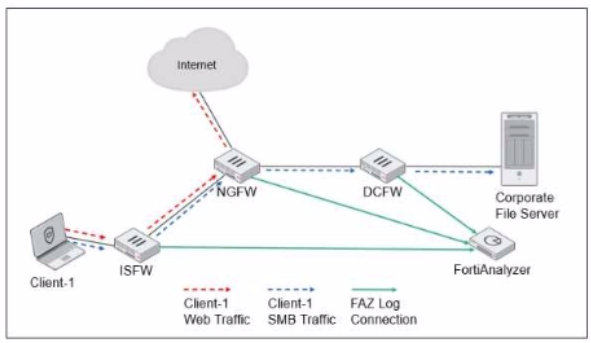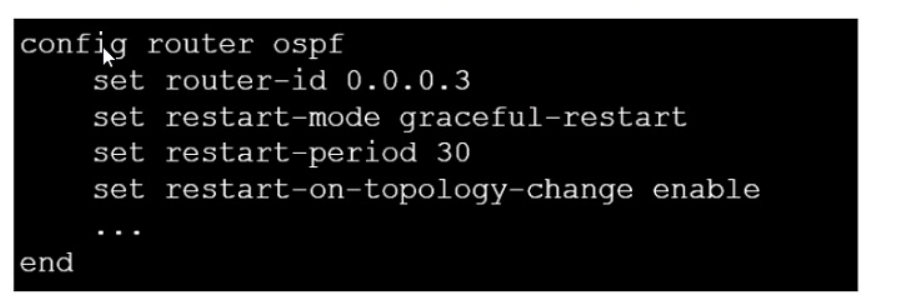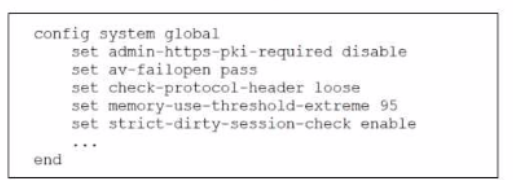Fortinet NSE 7 - Enterprise Firewall 7.2 NSE7_EFW-7.2 Exam Practice Test
Exhibit.

ISFW is installed in the access layer NGFW is performing SNAT and web tittering DCFW is running IPS Which two statements are true regarding the Security Fabric logging? (Choose two.)
Answer : A, B
Exhibit.

Refer to the exhibit, which shows a partial touting table
What two concisions can you draw from the corresponding FortiGate configuration? (Choose two.)
Refer to the exhibit, which contains a partial OSPF configuration.

What can you conclude from this output?
Answer : C
From the partial OSPF (Open Shortest Path First) configuration output:
B . The router sends grace LSAs before it restarts: This is implied by the command 'set restart-mode graceful-restart'. When OSPF is configured with graceful restart, the router sends grace LSAs (Link State Advertisements) to inform its neighbors that it is restarting, allowing for a seamless transition without recalculating routes.
Fortinet documentation on OSPF configuration clearly states that enabling graceful restart mode allows the router to maintain its adjacencies and routes during a brief restart period.
Refer to the exhibit, which shows an error in system fortiguard configuration.

What is the reason you cannot set the protocol to udp in config system fortiguard?
Answer : B
The reason for the command failure when trying to set the protocol to UDP in the config system fortiguard is likely that UDP is not a protocol option in this context. The command syntax might be incorrect or the option to set a protocol for FortiGuard updates might not exist in this manner. So the correct answer is D. udp is not a protocol option.
Refer to the exhibit, which contains a partial configuration of the global system.

What can you conclude from the output?
Answer : B
Which two statements about metadata variables are true? (Choose two.)
Answer : C, D
Metadata variables in FortiGate are created to store metadata associated with different FortiGate features. These variables can be used in various configurations and scripts to dynamically replace the variable with its actual value during processing. A: You create metadata variables on FortiGate. They are used to store metadata for FortiGate features and can be called upon in different configurations. D: They can be used as variables in scripts. Metadata variables are utilized within the scripts to dynamically insert values as per the context when the script runs.
Fortinet FortiOS Handbook: CLI Reference
What is true about the Fitter override option in the application control profile?
Answer : B